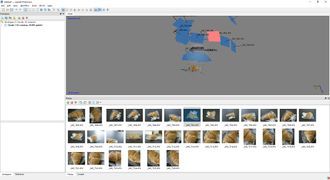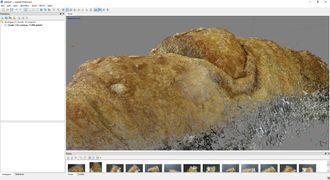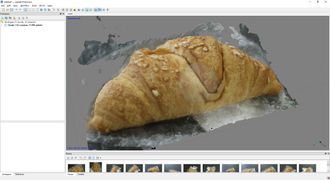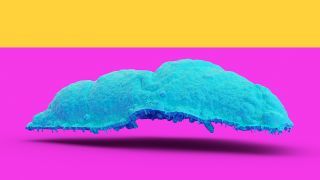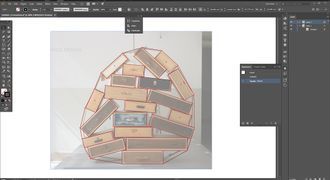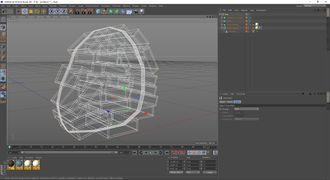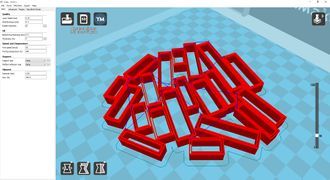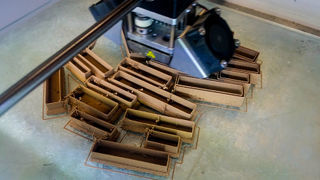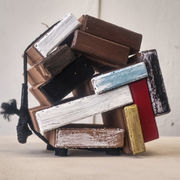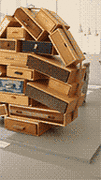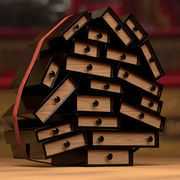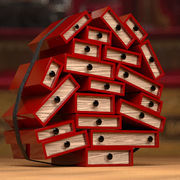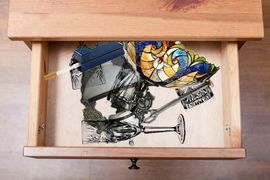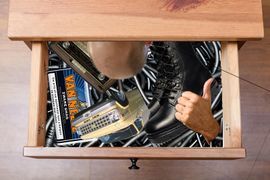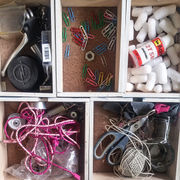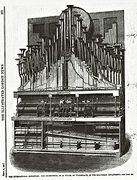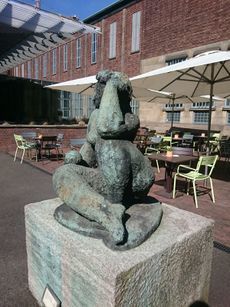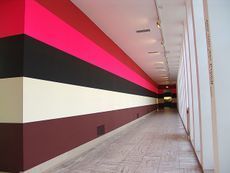Difference between revisions of "User:Fuutsie"
(Created page with "Hoe noem je een fuut die onder water duikt...") |
|||
| (175 intermediate revisions by the same user not shown) | |||
| Line 1: | Line 1: | ||
| − | + | <div style="width:65em;font-size:16px;font-family:Verdana;display:block;padding:5px;color:black;background:linear-gradient(to bottom right,#FCF9EF,#FF2288);border:10px inset grey;"> | |
| + | =<div><span style="color:#ff0000;">T</span><span style="color:#ff2a00;">h</span><span style="color:#ff5500;">e</span><span style="color:#ff7f00;"> </span><span style="color:#ffaa00;">u</span><span style="color:#ffd400;">n</span><span style="color:#ffff00;">e</span><span style="color:#aaff00;">x</span><span style="color:#55ff00;">t</span><span style="color:#00ff00;">r</span><span style="color:#00ff55;">a</span><span style="color:#00ffaa;">o</span><span style="color:#00ffff;">r</span><span style="color:#00aaff;">d</span><span style="color:#0055ff;">i</span><span style="color:#0000ff;">n</span><span style="color:#2e00ff;">a</span><span style="color:#5d00ff;">r</span><span style="color:#8b00ff;">y</span><span style="color:#b200aa;"> </span><span style="color:#d80055;">r</span><span style="color:#ff0000;">e</span><span style="color:#ff2a00;">s</span><span style="color:#ff5500;">e</span><span style="color:#ff7f00;">a</span><span style="color:#ffaa00;">r</span><span style="color:#ffd400;">c</span><span style="color:#ffff00;">h</span><span style="color:#aaff00;"> </span><span style="color:#55ff00;">a</span><span style="color:#00ff00;">n</span><span style="color:#00ff55;">d</span><span style="color:#00ffaa;"> </span><span style="color:#00ffff;">p</span><span style="color:#00aaff;">r</span><span style="color:#0055ff;">o</span><span style="color:#0000ff;">c</span><span style="color:#2e00ff;">e</span><span style="color:#5d00ff;">s</span><span style="color:#8b00ff;">s</span><span style="color:#b200aa;"> </span><span style="color:#d80055;">o</span><span style="color:#ff0000;">f</span><span style="color:#ff2a00;"> </span><span style="color:#ff5500;">R</span><span style="color:#ff7f00;">i</span><span style="color:#ffaa00;">k</span><span style="color:#ffd400;"> </span><span style="color:#ffff00;">W</span><span style="color:#aaff00;">i</span><span style="color:#55ff00;">j</span><span style="color:#00ff00;">n</span><span style="color:#00ff55;">g</span><span style="color:#00ffaa;">a</span><span style="color:#00ffff;">a</span><span style="color:#00aaff;">r</span><span style="color:#0055ff;">d</span><span style="color:#0000ff;">s</span></div>= | ||
| + | |||
| + | {| role="presentation" class="wikitable mw-collapsible mw-collapsed" | ||
| + | | <strong>Appropriation, the early research</strong> | ||
| + | |- | ||
| + | | | ||
| + | ==Appropriation, the early research== | ||
| + | |||
| + | The quickest explanation is repurposing an object/artpiece as is to give it another function or meaning. This can be as simple as turning a table upside down, but can also exist in the way of Pablo Picasso’s “Guitar, Sheet music and Wine glass, where existing pieces come together to form a new work. This way a NEW object is created. | ||
| + | |||
| + | |||
| + | Another way of looking at it is by using objects not in the way the designer/artist has intended it to. For example truck inner tires being used as floating devices or a table being used to sit on. Here ''semiotics'' come into play: Playing with what is expected from the user. This way an EXISTING object is used in a different way. | ||
| + | |||
| + | |||
| + | |||
| + | Appropriation also has a bad aftertaste in some fields, as it is also connected with copyright infringement. This happens when someone takes the work without consent or approval of the original owner. | ||
| + | |||
| + | When is it a new work? | ||
| + | When is the original function (or meaning) new enough to be classified as original? | ||
| + | |||
| + | Everything has to come from somewhere: Linking artists/designers interpretations throughout his life and combining this into a new piece. (David T. Ansted - The stone book of nature) This way everything made, copied or not should be interpreted as a new work. You can’t copy something that doesn’t exist. Take “Ceci n’est pas une pipe” of Ren’e Magritte. In the same way you could perfectly copy an artwork, but the function and meaning change: If you repaint/reproduce Victory Boogie Woogie from Mondriaan, it isn’t about Manhattan or the music on the streets, but more about Piet Mondriaan and the fame behind his name. | ||
| + | |||
| + | |||
| + | Some interesting questions I did not go on with for now: | ||
| + | |||
| + | Why do we not like being copied by other people? | ||
| + | Does the intention of copying change the ethics of appropriation? | ||
| + | Type of person that does it with intention of gaining profit? | ||
| + | |||
| + | https://www.artspace.com/magazine/art_101/art_market/art_101_appropriation_art-5550 | ||
| + | |} | ||
| + | |||
| + | {| role="presentation" class="wikitable mw-collapsible" | ||
| + | | <strong>Process from stealing to making</strong> | ||
| + | |- | ||
| + | | | ||
| + | ==Stealing and recreating the work== | ||
| + | |||
| + | This is the part where my digital part came to the assignment. Knowing about the Kinect I desperately tried to get it working from my laptop and tablet, just to find out windows stopped supporting the old kinect in windows 10. This is a shame because now 3D modeling and scanning comes standard with any windows computer. ([http://reconstructme.net/ Reconstruct Me]) Because of this I decided to rent a dslr camera so I could take pictures with full control needed in photogrammetry. [https://www.youtube.com/watch?v=diQAJO4sghQ A good link for how to shoot photos for photogrammetry]. | ||
| + | |||
| + | |||
| + | ===Using photoscan=== | ||
| + | |||
| + | Photoscan is amazing since it has all features built right in the program. When doing it for commercial work I recommend a combination of [http://ccwu.me/vsfm/ VisualSFM] and [http://www.meshlab.net/ MeshLab]. This is a free method which can give really good results too, but it is less convenient. | ||
| + | |||
| + | <gallery mode=packed widths=150px class="center"> | ||
| + | file:photoscan1.jpg|adding/aligning photo's | ||
| + | file:photoscan2.jpg|generating dense pointcloud | ||
| + | file:photoscan3.jpg|generating mesh | ||
| + | file:Crois.jpg|A testrender of the mesh. | ||
| + | </gallery> | ||
| + | |||
| + | ===Overall process=== | ||
| + | |||
| + | Since photo reconstruction does not work well with straight and shiny objects, takes a lot of computing power (time) and since the cabinet did not contain intricate details I wanted to capture I decided to do the modeling by hand using my good time favorite: [https://www.maxon.net/en/ Cinema 4D]. | ||
| + | |||
| + | <gallery mode=packed widths=150px class="center"> | ||
| + | file:Overpulling.jpg|Tracing | ||
| + | file:Modeling1.jpg|Extruding & modeling | ||
| + | file:DroogPrint.jpeg|Preparation | ||
| + | file:droogcabprint.jpg|Printing | ||
| + | file:finaldroog.jpg|Final painted version | ||
| + | </gallery> | ||
| + | |||
| + | ==Contextualise the object== | ||
| + | |||
| + | I loved the idea of using the drawers of the cabinet as memories, as it was also in the [https://www.moma.org/collection/works/3578 original]. I wanted to focus more on the contents than the storage itself since I wanted to add my interest of audio to this project. Not only did this work because every drawer has its own sound, but it would also add a whole idea to experiment with and a different way to appropriate the original cabinet. | ||
| + | |||
| + | I am using music and sound in a broad sense, as is seen in [https://youtu.be/46w99bZ3W_M?t=4m31s this video] of Mark Appelbaum. | ||
| + | Imagining the closet in different scenario's, finally settling for the concert hall, to help visualizing it as an instrument. | ||
| + | |||
| + | <gallery mode=packed widths=150px class="center"> | ||
| + | file:Memories.gif|Original context, Museum | ||
| + | file:Instrucabinetdiy.jpg| Extruding & modeling | ||
| + | file:Instrucabinet.jpg| Concert Hall | ||
| + | file:Instrucabinet2.jpg| Variation | ||
| + | </gallery> | ||
| + | |||
| + | ==Creating the object== | ||
| + | |||
| + | Since I had the 3D model I printed the model. I used a filament with wood for this. For the working appropriated model I used wood since it had to be sturdier to endure experimenting. I used common, but also object specific to certain memories of mine. For example I used paperclips to create rattle, but the Opel hubcaps are really specific to the memories of my father. | ||
| + | |||
| + | *[https://instaud.io/29T6 Sound 1 Oma] | ||
| + | *[https://instaud.io/29Te Sound 2 Bomma] | ||
| + | *[https://instaud.io/29Th Sound 3 Shed] | ||
| + | *[https://instaud.io/29Ti Sound 4 Pa] | ||
| + | *[https://instaud.io/29Tj Sound 5 Mam] | ||
| + | |||
| + | <gallery mode=packed widths=150px class="center"> | ||
| + | file:Omala.jpg|Original Drawer of grandma | ||
| + | file:papala.jpg| Drawer of my father | ||
| + | file:20180510_113940_HDR.jpg| The used drawers during the presentation | ||
| + | </gallery> | ||
| + | |||
| + | ==Conclusion & Future== | ||
| + | |||
| + | One big thing that I forgot to add to the project which would have really changed its power would be to speak the language of the public. My drawers impersonated MY family members and places, which meant that the audience (class and teacher) did not get the story told. I see this as a big mistake as music to me is a way to tell a story. If I saw the cabinet as a way to express myself, not meaning to make the songs public, this would not be a problem, however this is not the case. | ||
| + | |||
| + | Because of this I think my next step is to find a subject to "write" a piece about, keeping in mind the objects, their sounds and composition, which makes it quite a job, but in my opinion an interesting way of writing. Take for example Rimsky Korsakov and his [https://www.youtube.com/watch?v=aYAJopwEYv8 Flight of the Bumblebee] which everyone I know would recognize as a (bumble)bee in flight. (This makes choosing a target audience important.) | ||
| + | |||
| + | |||
| + | When there is a piece and a final instrument I can fantasize on how to add to the overall project. For me, a recording wouldn't suffice in reproduction of the musical pieces. This would mean experimenting with ways to play-back preconfigured songs on the cabinet, in the way of old musicboxes/[https://youtu.be/5UpriHcn_xs?t=3m57s orchestrions] that I went to see in the speelklokmuseum. However, I would modernise it with digital techniques to make it substantially more compact. | ||
| + | |||
| + | <gallery mode=packed widths=150px class="center"> | ||
| + | file:220px-Welteorchestrion1862.jpg|Orchestrion | ||
| + | file:papala.jpg| Drawer of my father | ||
| + | </gallery> | ||
| + | |||
| + | |||
| + | |} | ||
| + | |||
| + | {| role="presentation" class="wikitable mw-collapsible mw-collapsed" | ||
| + | | <strong>Contrafactual Past & Speculative future</strong> | ||
| + | |- | ||
| + | | | ||
| + | |||
| + | Disclaimer: These little concept stories are a mix of facts and fabrications. Do not see these as original intentions of the author! | ||
| + | |||
| + | |||
| + | ===Contrafactual Past=== | ||
| + | |||
| + | [[file:Zittendnaakt1.jpeg|thumbnail|upright|left|alt=Lady peeling green tomato on the Giorno di Risposo|Zittend naakt met appel.]] | ||
| + | |||
| + | <strong>Lady peeling green tomato on the Giorno di Risposo</strong> | ||
| + | |||
| + | The day the god Fortuna, god of fortune, fate and fertility leaves and makes place for Anteros, god of love and passion, women prepared a festive meal to celebrate the occasion. This day is often referred to as “giorno di riposo”, Literally translated to “Day of rest”. Where usually the locals of Acri (south of Italy) wore fabulous clothing to praise the gods, Anteros was praised by a day of openness and freedom. | ||
| + | Since this day was not pinned by a specific date but determined by the harvest of tomatoes it was commonly associated by the refreshing of the soil. To prevent staining the soil with “unnatural” clothing, women and children were not allowed to wear clothes on the fields. | ||
| + | |||
| + | The end of the harvest was celebrated by a grand meal. Pasto Prandi (Meal of rest) was a dish where green tomatoes were peeled and boiled with spices, and wine. | ||
| + | |||
| + | This statue is a snapshot of a woman peeling tomatoes in preparation of pasto prandi. It is thought that this was originally made by an artist in Cosenza. Later was found out it was a abbreviation of the original work. | ||
| + | |||
| + | ===Speculative Future=== | ||
| + | |||
| + | [[file:Nr155 Staff.jpg|thumbnail|upright|left|alt=Visualization of example-code 2a|Nr 155 Staff]] | ||
| + | |||
| + | <strong>Visualization of code example 2a</strong> | ||
| + | |||
| + | Lines, perspective, all things that we have to consider while programming the virtual world. To keep not only the mind, but also the physical human in contact with the program we make an artificial stage, where the tactile connection correlates with the mental image of the program. | ||
| + | [https://www.youtube.com/watch?v=fvu5FxKuqdQ&t=659s VR Crossdimension] | ||
| + | |||
| + | Combining these parameters makes us able to guide people the right way and happy in their Lifepod: Giving them the feeling of mobility. | ||
| + | |||
| + | With the colors, or, not-colors black and white, we can steer the mind in thinking of human reality. As communicated: | ||
| + | *Dark red equals the boundary of the simulation. | ||
| + | *Black defines the horizon. | ||
| + | *Pink is the color used to show people the way to the next activity. | ||
| + | |||
| + | |||
| + | Next activities should be linked to their corresponding colors: | ||
| + | |||
| + | *Green for meal. | ||
| + | *Blue for social interaction. | ||
| + | *Orange for leisure time. | ||
| + | |||
| + | |||
| + | Both these blocks are used for unconscious learning by triggering the optoneurons to provoke activity in certain parts of the brain. This to ensure mental growth is not prohibited in case an opportunity arises. | ||
| + | [https://www.ncbi.nlm.nih.gov/pmc/articles/PMC2820367/ Optogenetics] | ||
| + | [http://www.vangla.ee/en/news-and-numbers/example-daily-prison-schedule Schedule] | ||
| + | |||
| + | Keep in mind to strictly use our code as the person will feel confused and/or become aware of the simulation. When this happens serious actions will be taken to prevent this event recurring, and thus disqualifying the responsibles from their position. | ||
| + | |||
| + | |} | ||
| + | |||
| + | </div> | ||
Latest revision as of 09:46, 10 May 2018
The unextraordinary research and process of Rik Wijngaards
| Appropriation, the early research |
Appropriation, the early researchThe quickest explanation is repurposing an object/artpiece as is to give it another function or meaning. This can be as simple as turning a table upside down, but can also exist in the way of Pablo Picasso’s “Guitar, Sheet music and Wine glass, where existing pieces come together to form a new work. This way a NEW object is created.
Appropriation also has a bad aftertaste in some fields, as it is also connected with copyright infringement. This happens when someone takes the work without consent or approval of the original owner. When is it a new work? When is the original function (or meaning) new enough to be classified as original? Everything has to come from somewhere: Linking artists/designers interpretations throughout his life and combining this into a new piece. (David T. Ansted - The stone book of nature) This way everything made, copied or not should be interpreted as a new work. You can’t copy something that doesn’t exist. Take “Ceci n’est pas une pipe” of Ren’e Magritte. In the same way you could perfectly copy an artwork, but the function and meaning change: If you repaint/reproduce Victory Boogie Woogie from Mondriaan, it isn’t about Manhattan or the music on the streets, but more about Piet Mondriaan and the fame behind his name.
Why do we not like being copied by other people? Does the intention of copying change the ethics of appropriation? Type of person that does it with intention of gaining profit? https://www.artspace.com/magazine/art_101/art_market/art_101_appropriation_art-5550 |
| Process from stealing to making |
Stealing and recreating the workThis is the part where my digital part came to the assignment. Knowing about the Kinect I desperately tried to get it working from my laptop and tablet, just to find out windows stopped supporting the old kinect in windows 10. This is a shame because now 3D modeling and scanning comes standard with any windows computer. (Reconstruct Me) Because of this I decided to rent a dslr camera so I could take pictures with full control needed in photogrammetry. A good link for how to shoot photos for photogrammetry.
Using photoscanPhotoscan is amazing since it has all features built right in the program. When doing it for commercial work I recommend a combination of VisualSFM and MeshLab. This is a free method which can give really good results too, but it is less convenient. Overall processSince photo reconstruction does not work well with straight and shiny objects, takes a lot of computing power (time) and since the cabinet did not contain intricate details I wanted to capture I decided to do the modeling by hand using my good time favorite: Cinema 4D. Contextualise the objectI loved the idea of using the drawers of the cabinet as memories, as it was also in the original. I wanted to focus more on the contents than the storage itself since I wanted to add my interest of audio to this project. Not only did this work because every drawer has its own sound, but it would also add a whole idea to experiment with and a different way to appropriate the original cabinet. I am using music and sound in a broad sense, as is seen in this video of Mark Appelbaum. Imagining the closet in different scenario's, finally settling for the concert hall, to help visualizing it as an instrument. Creating the objectSince I had the 3D model I printed the model. I used a filament with wood for this. For the working appropriated model I used wood since it had to be sturdier to endure experimenting. I used common, but also object specific to certain memories of mine. For example I used paperclips to create rattle, but the Opel hubcaps are really specific to the memories of my father. Conclusion & FutureOne big thing that I forgot to add to the project which would have really changed its power would be to speak the language of the public. My drawers impersonated MY family members and places, which meant that the audience (class and teacher) did not get the story told. I see this as a big mistake as music to me is a way to tell a story. If I saw the cabinet as a way to express myself, not meaning to make the songs public, this would not be a problem, however this is not the case. Because of this I think my next step is to find a subject to "write" a piece about, keeping in mind the objects, their sounds and composition, which makes it quite a job, but in my opinion an interesting way of writing. Take for example Rimsky Korsakov and his Flight of the Bumblebee which everyone I know would recognize as a (bumble)bee in flight. (This makes choosing a target audience important.)
|
| Contrafactual Past & Speculative future |
|
Disclaimer: These little concept stories are a mix of facts and fabrications. Do not see these as original intentions of the author!
Contrafactual PastLady peeling green tomato on the Giorno di Risposo The day the god Fortuna, god of fortune, fate and fertility leaves and makes place for Anteros, god of love and passion, women prepared a festive meal to celebrate the occasion. This day is often referred to as “giorno di riposo”, Literally translated to “Day of rest”. Where usually the locals of Acri (south of Italy) wore fabulous clothing to praise the gods, Anteros was praised by a day of openness and freedom. Since this day was not pinned by a specific date but determined by the harvest of tomatoes it was commonly associated by the refreshing of the soil. To prevent staining the soil with “unnatural” clothing, women and children were not allowed to wear clothes on the fields. The end of the harvest was celebrated by a grand meal. Pasto Prandi (Meal of rest) was a dish where green tomatoes were peeled and boiled with spices, and wine. This statue is a snapshot of a woman peeling tomatoes in preparation of pasto prandi. It is thought that this was originally made by an artist in Cosenza. Later was found out it was a abbreviation of the original work. Speculative FutureVisualization of code example 2a Lines, perspective, all things that we have to consider while programming the virtual world. To keep not only the mind, but also the physical human in contact with the program we make an artificial stage, where the tactile connection correlates with the mental image of the program. VR Crossdimension Combining these parameters makes us able to guide people the right way and happy in their Lifepod: Giving them the feeling of mobility. With the colors, or, not-colors black and white, we can steer the mind in thinking of human reality. As communicated:
Keep in mind to strictly use our code as the person will feel confused and/or become aware of the simulation. When this happens serious actions will be taken to prevent this event recurring, and thus disqualifying the responsibles from their position. |
